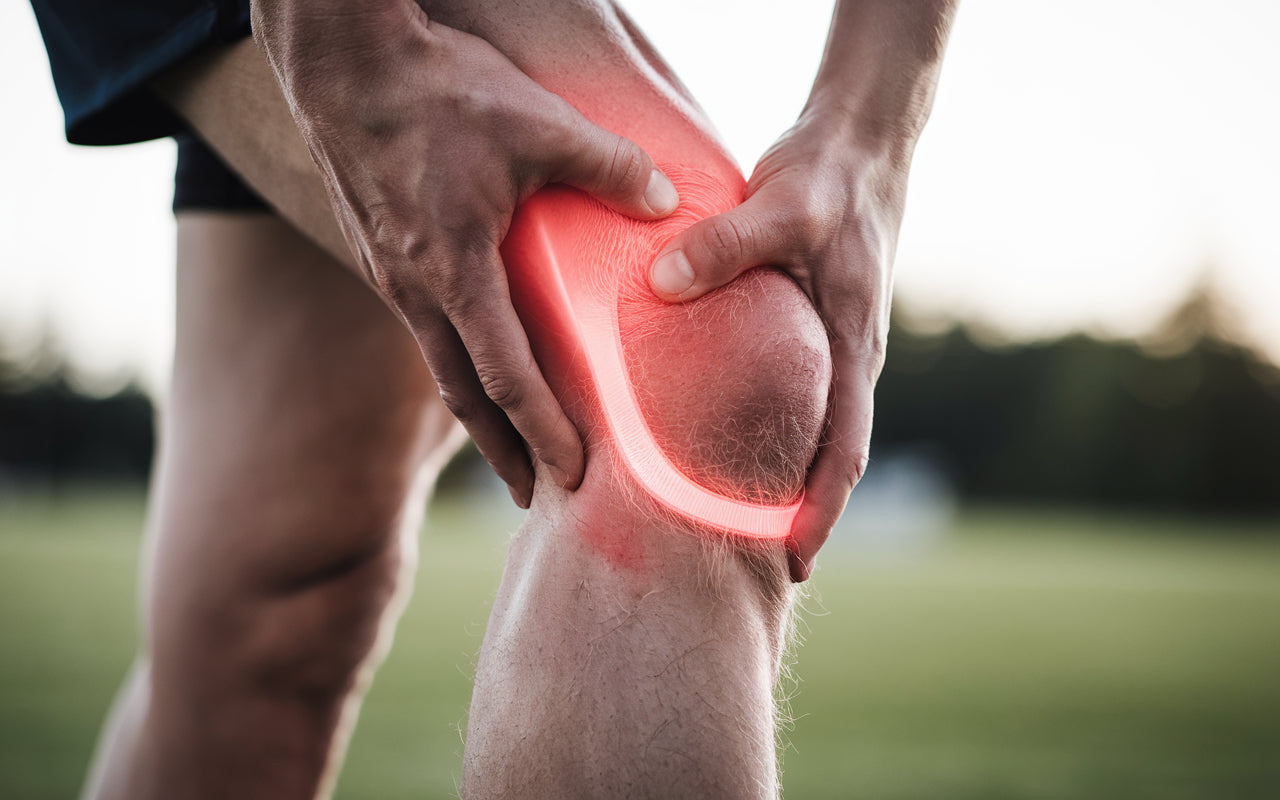Løperkne: Årsaker, Symptomer og Effektiv Behandling

Runner's knee is an overuse injury that often affects runners, exercisers, and elite athletes. The condition is also called runner's knee or long-distance knee and is caused by irritation and friction in or around the iliotibial band. This thick structure of connective tissue runs along the outside of the thigh and sits on the outside where it attaches to the shinbone ( tibia ). Because the iliotibial band connects the hip and knee, pain and pain around the knee can quickly affect both everyday life and training as the overload continues.
Runner's knee – What is runner's knee?
Runner’s knee is pain on the outside of the knee, usually just above or at the knee joint. It occurs when the iliotibial band – sometimes called the “IT band” – becomes overstretched. This tendon (or tendon-like connective tissue) runs from the hip bone, along the outside of the thigh, and down to the shin bone. Runner’s knee causes friction between the iliotibial band and the lateral part of the thigh bone, especially when you run or bend your knee repeatedly. Over time, this leads to irritation and pain that often gets worse when running downhill or towards the end of a long workout.
A common cause of pain on the outside of the knee is runner's knee, especially in active people.
Symptoms – The most common signs of runner's knee
There are several symptoms that indicate that you have runner's knee:
- Pain on the outside of the knee: Often sharp and burning, especially when running downhill or increasing your pace.
- Tenderness: You may feel tenderness around the lateral part of your knee, where the iliotibial band attaches to the shinbone.
- Stiffness: After rest, the area may feel stiff before you “get going” again.
- Swelling: Sometimes slight swelling occurs around the knee joint due to irritation.
- The pain worsens with activity: Especially during longer runs or cycling.
These symptoms can easily be confused with other conditions, such as knee overuse , making it important to understand the difference.
Treatment – Effective methods for runner's knee
A basic treatment for runner's knee is to reduce or adjust the load that causes irritation in the tendon and the outside of the knee. Some effective methods include:
- Rest
- Ice treatment
- Stretching exercises
- Strength training
- Kneepad
- Physiotherapist
- Pain relief
Reducing the load while simultaneously treating any underlying causes, such as patellofemoral pain syndrome (PFPS) , can yield good results.

Effective knee support for relief from runner's knee
The KnaKomforten is a specialized knee brace designed to relieve the discomfort of runner's knee, also known as patellofemoral pain syndrome. This condition is characterized by pain around or behind the kneecap, often aggravated by activities such as running, squatting, or descending stairs.
Advantages of KnaKomforten:
- Provides targeted compression to relieve knee pain
- Helps stabilize the knee joint and prevent further injury
- Ergonomic and comfortable design for long-term use
- Allows full freedom of movement during physical activities
- Perfect for athletes, runners and active people
KnaKomforten offers reliable support that helps you move without discomfort.
Buy nowContinue running – Can you train with runner's knee?
Many people wonder if they can continue running despite runner's knee. The answer depends on how much pain it causes and how long the pain has been present. In some cases, running training can be continued in a modified form, but if the problem persists, it is important to avoid aggravating the condition. For some, secondary problems, such as meniscus damage , may also occur if the knee load is not adjusted.
Get help – When should you seek care?
You should get help from a doctor or physiotherapist if:
- Your knee pain does not decrease despite rest and self-care
- You suspect a more serious injury to the knee joint
- You have tried to reduce the load but the discomfort persists
In the event of persistent knee pain, it is also important to rule out other knee-related diagnoses such as osteoarthritis of the knee .
Frequently Asked Questions (FAQ)
1. How long does it take to recover from runner's knee?
Recovery time for runner's knee varies depending on the severity of the injury and how well you follow your treatment plan. In most cases, mild to moderate runner's knee can improve within 4-8 weeks with proper treatment and rest. More severe cases can take several months. It is important to be patient and not return to full activity too soon, as this can lead to a relapse. Consistent use of recommended treatment methods, including rest, stretching, strength training, and possibly the use of a knee brace, can help speed up the healing process.
2. Can I continue running with runner's knee?
It depends on the intensity of the pain and how your knee responds to activity. In most cases, a period of rest or reduced activity is recommended to give the knee time to heal. Light running may sometimes be possible if the pain is mild and does not worsen during or after the activity. However, it is often better to temporarily switch to alternative forms of exercise that have less impact on the knee, such as swimming or cycling. When you resume running, do so gradually and use a knee brace for extra support if recommended by your doctor or physiotherapist. Always listen to your body and stop exercising if the pain increases.
3. How can I distinguish runner's knee from other knee injuries?
Runner's knee is primarily characterized by pain on the outside of the knee, which sets it apart from many other knee injuries. Here are some key factors to consider:
- Location: Runner's knee causes pain on the outside of the knee, unlike, for example, patellofemoral pain syndrome which causes pain around or behind the kneecap.
- Timing: The pain of runner's knee often occurs after a certain period of running or activity, rather than immediately.
- Exacerbation: Runner's knee often worsens when running downhill or after prolonged running on flat ground.
- Other symptoms: Unlike some other knee injuries, runner's knee rarely causes locking or instability in the knee.
If you are unsure of your diagnosis, it is best to consult a doctor or physical therapist for a professional assessment. They can perform specific tests to differentiate runner's knee from other knee problems and provide you with the right treatment.

